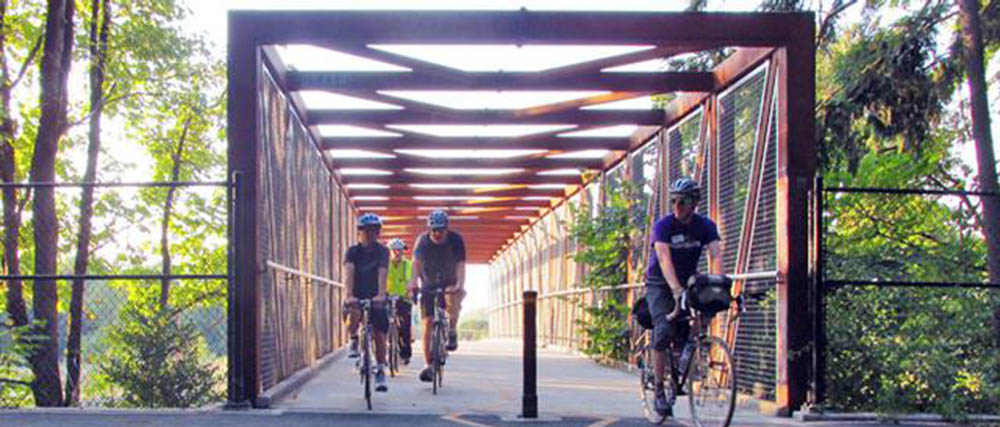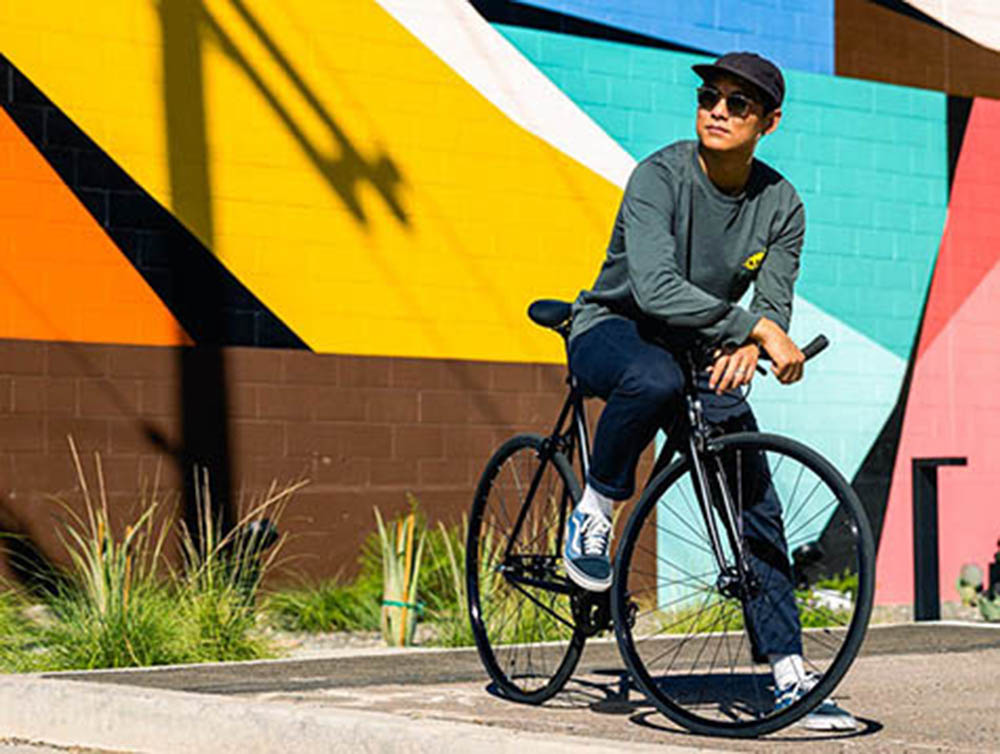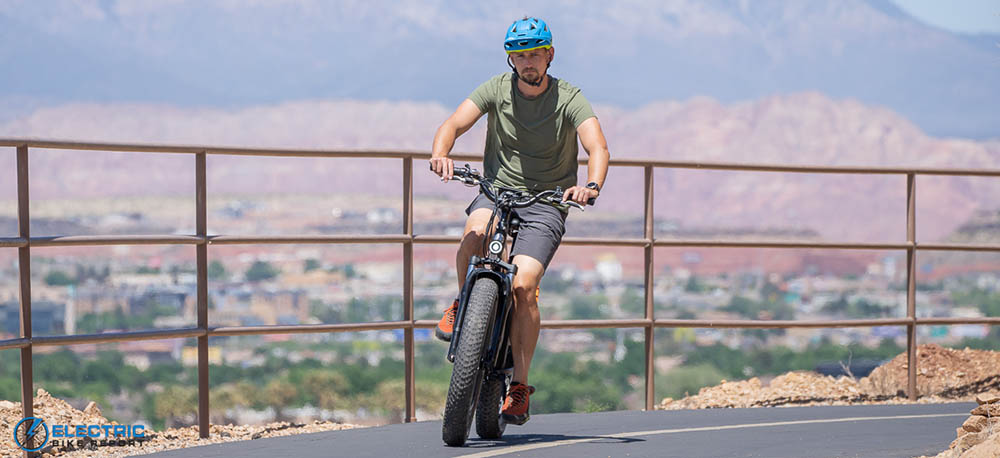Are folding bikes difficult to ride?

No one can deny the convenience that folding bikes can bring – as they are great for short rides and take up very little space when you need to stow them away. As positive as it may seem, folding bikes pose several problems. When we found out that cyclists were primarily complaining about the speed and overall rideability of folding bikes, we tried to figure out their plight. Fortunately, we managed to find some credible answers.
So, are folding bikes hard to ride? I have to say it’s a resounding yes. The portability of the bike sacrifices its overall ride performance. This dilemma is clear just by looking at how folding bikes are constructed to be smaller and more unwieldy than other bike models. Also, the wheels would be very small if placed on other bike models of the same standard size – making long rides difficult. In the long run, this dilemma quickly highlights a problem that folding bike makers often overlook to consumers, as the bikes they primarily offer are gateways to a hobby, not something that lasts a lifetime.
What Makes Folding Bikes Difficult to Ride?
To determine what makes a folding bike harder to ride than a standard mountain bike or BMX, we have to focus on its build. When you compare a folding bike to a standard bike, it has some fundamental changes that mostly make up for most of the difficulty of riding.
1. Handle post
The first is the handlebar post and fork of the folding bike. After a quick look and comparison, it’s easy to notice how the folding bike has a longer handlebar post and a shorter fork (and, of course, the wheels themselves are tiny). If you were to do some level of scientific analysis on it, you would easily figure out how its physics didn’t add up in this setup. Yes, it’s functional and functional, but it definitely doesn’t provide the most comfortable steering experience, and it’s really awkward to hold on to the handlebars. The fulcrum on the handlebar sits pretty badly relative to the handlebar stem, and the fact that the wheel is so small makes it feel like it’s laborious just to make an easy turn. But this is not the only problem,
2. Wheels
Another problem with the bike’s build is its super small wheels. A size 20 (BMX size) folding bike has a size 16 (kid’s bike), and a size 26 (mountain bike size) wheel is a size 24 (kid’s large bike). That means more cycles will be needed to propel the bike and the rider forward, not to mention that the wheels are specifically designed for the road. They’re also not as wide (measured at about 1.38cm instead of the standard 2.125cm), which makes them less air pressure and generally more difficult to traverse roads, especially those that are less slippery and tarmac. Overall, these smaller wheels are not only harder to pedal, but require more cycles to propel you forward.
3. Handlebars
Ironically, folding bikes often have flat handlebars (like a binding or racer) rather than curved (like a mountain bike) or elevated (like a BMX). This ends up in a rather awkward resting position for the arms, as it feels as if you’re pushing the bike in half, and neither the mid-frame nor the handlebar joints are helping to ease the buckling of the bent metal pieces.
4. Seatpost
The seatpost is in such a position that it slopes back and it is so long that it feels as if you are safe. To be honest, the seatpost actually feels as though it will 1) fold or 2) make the frame just enough to allow you to sit further back if you’re a little on the heavier side. It’s not the most ergonomic or the most comfortable, but somehow it keeps you upright despite being mounted in such an angled position.

5. Circulation mechanism
When you pedal a non-folding bike as standard, it feels like you are pedaling on the crankset to propel yourself forward. Imagine you’re kicking yourself off the ground when you try to pedal, and the more you kick, the faster you’re going as well. What sets folding bikes apart is that the crankset is positioned in such a way that it feels like you’re kicking the ground to propel yourself forward (like those Japanese bikes). This is mostly because you sit upright on the bike more than you lean forward, which makes the whole riding mechanism feel different.
This means that when pedaling faster on a folding bike, your calves and hips do most of the work, while on a regular bike, it’s actually your thighs that give off the power to make you go faster. After riding a folding bike, it will definitely be different from the tiredness of riding a normal bike. This prompts riders to take a little getting used to the new mechanism, but it only proves that this bike is better suited for fast touring than long rides.
Disadvantages of folding bikes – sacrificing rideability for portability
In order for the bike to be truly “compact” when folded, most parts are proven to be retractable or connected. This is usually not a good thing, especially since you’re putting extra points of pressure and tension on parts of the bike that need to be stiff and firm. What we’re dealing with here is the likely manifestation of the problem in the long run, as well as the overall discomfort of biking temporarily.
Scientifically, putting a lot of tension in all the wrong places without suspension (as most standard question folding bikes are – can only fold, but never conform to humps and bumps in the road) ) would result in a very awkward bike. Overall, it can be difficult for a rider to determine where to put their weight and how to keep their balance while riding a folding bike.
1. Discomfort from long rides
Folding a bike forces your body to sit on top of the vehicle in a very uncomfortable position, making it difficult to ride for long periods of time. Honestly, it’s perfect and very comfortable if you’re using it for a 10-minute errand or commute. Any longer can do considerable damage to the arms and legs, not to mention that it will definitely ruin your delicate gear (if that’s the reason you’re using a folding bike).
The experience of riding a folding bike for extended periods of time is a far cry from the comfort you’ll experience on a road bike, as you probably won’t enjoy the pain in your hips and calves in your thighs as much as most of the time. It’s also not the most back friendly, as it only makes you bend down slightly, making up for a very awkward position. Your arms won’t be as happy either, especially since folding a bike makes you feel as though you’re reaching for the handlebars more than you’re just holding them for the ride. Of course, we also added a bit of extra work again, taking into account the difficulty of cornering on a folding bike.
2. Bad hinges and joints
The most common locking type frame hinges prove to be quite counterintuitive when cycling. For one thing, they’re not the easiest to lock in to begin with – because screws and locking quick-release mechanisms, even screws, take a long time to get used to them. Another thing is that frame flex happens due to these joints and these can be easily fixed by opting for a bike without hinges. Even when folded, the hinges have a little “wobble” which generally makes up for the rather wobbly feel of riding the bike. You can feel most of the flex or wobble on the handlebar stem and the hinge between the seatpost and handlebar stem, which is definitely not the best feeling when it feels about to come loose. Although, some folding bike manufacturers have decided to alleviate this problem by using angled hinges so they don’t wobble as much. But the thing is, it’s cheaper and easier to opt for a regular road bike.
It’s really hard to get rid of that weird, awkward feeling when you try to ride a folding bike. This is a bike that strives very hard in terms of ergonomics and space saving – it succeeds in the latter but fails in the former. It’s funny when a folding bike feels good – it’s definitely worth the money. But then again, why cash in that much money when you can save up for a better riding road bike. Of course, the only limiting factor with a folding bike is that it’s easier to store inside the house. But is it really any good when you can barely ride them for your daily activities?

3. Weight issues
A folding bike might save space, but it’s not really that portable. Folding bikes typically weigh 32 pounds (14.5 kilograms) and above, and it’s far from something a person would try to climb up a few flights of stairs or walk through a hall or hallway. The way it folds up also doesn’t make carrying it that easy either, as the extra wheels sticking out or a better sense of engineering might help make this foldable bike as easy to carry around as you do a trolley.
Instead, the developers and engineers of the folding bike insist that they’d rather gather it into an oddly and irregularly shaped piece of metal that one could stow heavily in the trunk of a car or under a staircase. Another interesting thing about how folding bikes “fold” is the confusion about how to start folding. Just looking at this bike, it’s unclear which hinge should be installed first, and how to make sure no fittings or suspension mounts are damaged, and overall it’s a very questionable presence.
4. Ridiculous Gear
Most folding bikes offer three different speed modes, which should be parallel to the 6-8 speed modes of a road bike. The reason the folding bike only has a 3-speed mode is that the flywheel is so high that if there were more gears on it it would stick out, making the folding bike nearly impossible to fold. Also, the three gears on the flywheel don’t make up for that easily when riding, especially when getting on the bike, it’s hard to find balance in the first place.
Sadly, there are plenty of reasons why folding bikes are hard to ride. It doesn’t seem intimidating just by looking at it, but the clear difference between riding this folding bike and a standard road bike is more or less day and night. If anything, road bikes are still the recommended vehicle for people looking for easy-to-store bikes on the go. Otherwise, if you can afford to lock the bike somewhere and keep it secure, you’re better off getting around on a road bike.
If you are looking for a new way of commuting or want a healthier lifestyle, we are here to help you. Visit our website to learn more about electric bikes and electric scooter or please leave information to us.
 Shuangye ebike
Shuangye ebike
